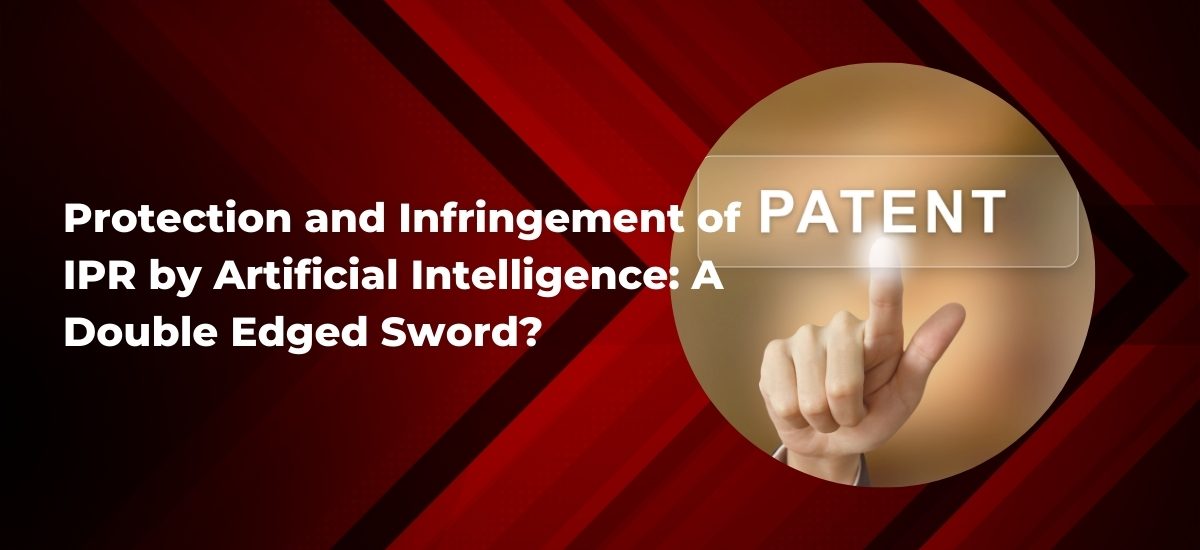



The relentless march of artificial intelligence (AI) is reshaping our world at an unprecedented pace. Its impact on intellectual property rights (IPR) is particularly fascinating, creating a paradoxical situation. On one hand, AI offers a powerful arsenal of tools for safeguarding creative endeavors and inventions. Imagine AI-powered systems scanning the internet for copyright infringement, streamlining patent registration, or even creating unbreakable anti-counterfeiting measures.
This vision of a future where AI acts as an unwavering guardian of intellectual property is undeniably appealing. However, the story doesn’t end there. AI also presents a set of challenges that threaten the very foundations of IPR protection. The question of who owns the rights to AI-generated works, from music to art to literature, remains a legal quagmire. Deepfakes, hyper-realistic AI-manipulated media, pose a significant threat to trademarks and reputations. And the potential for AI-powered piracy tools raises concerns about the illegal distribution of copyrighted content.
This complex interplay between AI and IPR necessitates a nuanced approach. We must navigate a path that fosters innovation and encourages the responsible development of AI while ensuring robust safeguards for intellectual property. This blog delves into this intricate relationship, exploring the opportunities and challenges AI presents for IPR protection. We’ll examine how AI can be harnessed as a shield to bolster enforcement and explore the potential pitfalls of AI acting as a spear that could infringe on intellectual property rights. Ultimately, we’ll advocate for a balanced approach – one that adapts legal frameworks, prioritizes transparency and accountability, and fosters collaboration between stakeholders to ensure AI empowers creators and innovators while safeguarding their rights in the digital age.
AI presents a range of opportunities to strengthen IPR protection. Here are some key areas:
Global Case Law Example: In a landmark 2021 US case, Lenz v. Universal Music Group, the court acknowledged the potential role of AI in fair use determinations. While the case did not definitively endorse AI-based fair use analysis, it opens the door for future applications of AI in copyright disputes.
Global Legal Example: The European Union Intellectual Property Office (EUIPO) has explored the potential of AI-powered blockchain for strengthening IPR enforcement. This highlights the growing interest in leveraging AI for anti-counterfeiting efforts.
Despite its potential benefits, AI also poses significant risks to IPR:
The complex relationship between AI and IPR necessitates a balanced approach that fosters innovation while safeguarding intellectual property. Here are some key considerations:
Global Initiatives: The World Intellectual Property Organization (WIPO) is actively exploring the impact of AI on IPR. These international discussions are crucial for developing a harmonized approach to AI and intellectual property.
The relationship between artificial intelligence and intellectual property rights is a complex dance, with both opportunities for protection and pitfalls of infringement. As AI continues to evolve, so too must our approach to safeguarding intellectual property.
The key lies in striking a balance. We need legal frameworks that adapt to the realities of AI-generated creations and AI-powered infringement methods. International cooperation through organizations like the World Intellectual Property Organization (WIPO) is crucial in developing harmonized solutions.
Transparency and accountability are paramount. Stakeholders, from tech giants to policymakers, must ensure AI tools are unbiased and respect human rights. Additionally, clear lines of accountability for AI-driven decisions related to IPR are essential.
Finally, collaboration is vital. They are bringing together rights holders, technology companies, and the public to foster responsible development and use of AI in the context of IPR. Educational initiatives can raise awareness about ethical AI practices and their impact on intellectual property.
By acknowledging the double-edged nature of AI and working towards a balanced approach, we can ensure it empowers creators and innovators. Imagine a future where AI streamlines patent applications, identifies potential copyright infringements with pinpoint accuracy, and even assists in the creation of groundbreaking inventions. This future, however, hinges on a collaborative effort to harness the potential of AI while safeguarding intellectual property in the digital age. Let’s work together to ensure AI remains a force for good, propelling innovation without compromising the rights of creators and inventors.